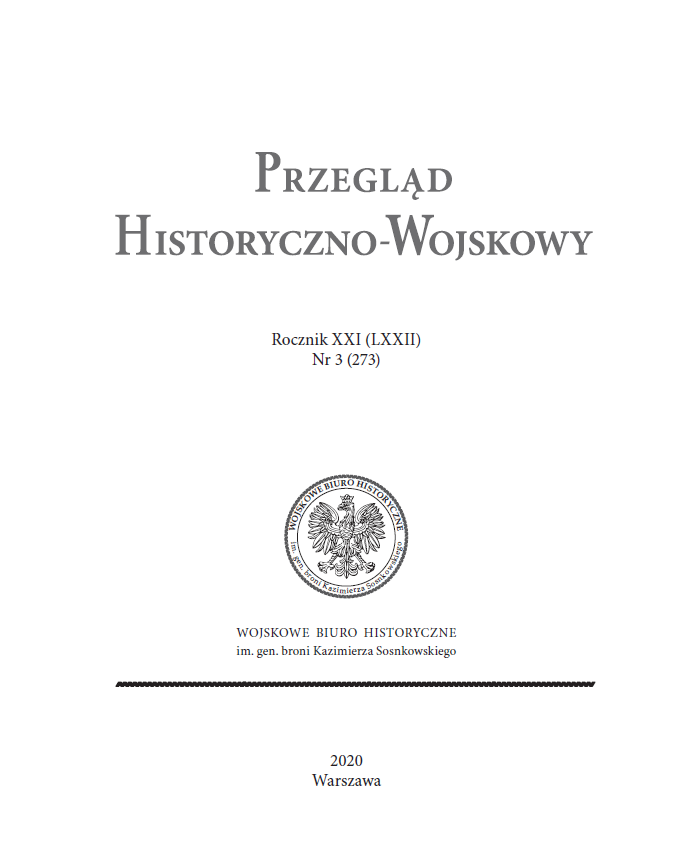Ewakuacja podczas odwrotu wojsk polskich w okresie czerwiec–sierpień 1920 roku – wybrane zagadnienia
Evacuation during the Retreat of Polish Troops in June–August 1920 – Selected Issues
Author(s): Janusz OdziemkowskiSubject(s): Politics / Political Sciences, History, Military history, Recent History (1900 till today), Interwar Period (1920 - 1939)
Published by: Wojskowe Biuro Historyczne im. gen. broni Kazimierza Sosnkowskiego
Keywords: Polish-Soviet War;enforced evacuation;planned evacuation;evacuation instructions;evacuation zone;evacuation centers;rolling stock;rear area;retreat;evacuation transportation;civil population
Summary/Abstract: Already in the spring of 1919, due to the threat of a German invasion, the Polish command had to prepare a plan of evacuation from the occupied territories of Lithuania and Belarus. Subsequent plans, prepared during the period of success of the Polish troops and the march to the east, assumed evacuation of small areas on endangered sections of the front. Tukhachevsky’s first offensive in May 1920 revealed the deficiencies of Polish evacuation plans, such as lack of rolling stock, poor communication, insufficient cooperation with civil authorities, a spontaneous and barely controllable evacuation of civil population and state administration. The experience gathered allowed to prepare more precise evacuation instructions. No one, however, predicted the scale of the evacuation that had to be carried out in summer 1920. It was managed by the military authorities. It was supervised by military authorities and covered the entire front line from Latvia to the border with Romania. It involved the transportation of cargo and people 400–600 km into the country and took place under constant enemy pressure, especially in the northern section of the front. It was based mainly on railroads, the only fast and capacious means of transport at that time. Despite extremely difficult conditions and inevitable chaos, a lot of valuable equipment and supplies were saved, tens of thousands of injured people and refugees were evacuated, as well as valuable rolling stock necessary for the successful regrouping of troops for the Wieprz counteroffensive.
Journal: Przegląd Historyczno-Wojskowy
- Issue Year: XXI/2020
- Issue No: 3
- Page Range: 12-46
- Page Count: 12
- Language: Polish

